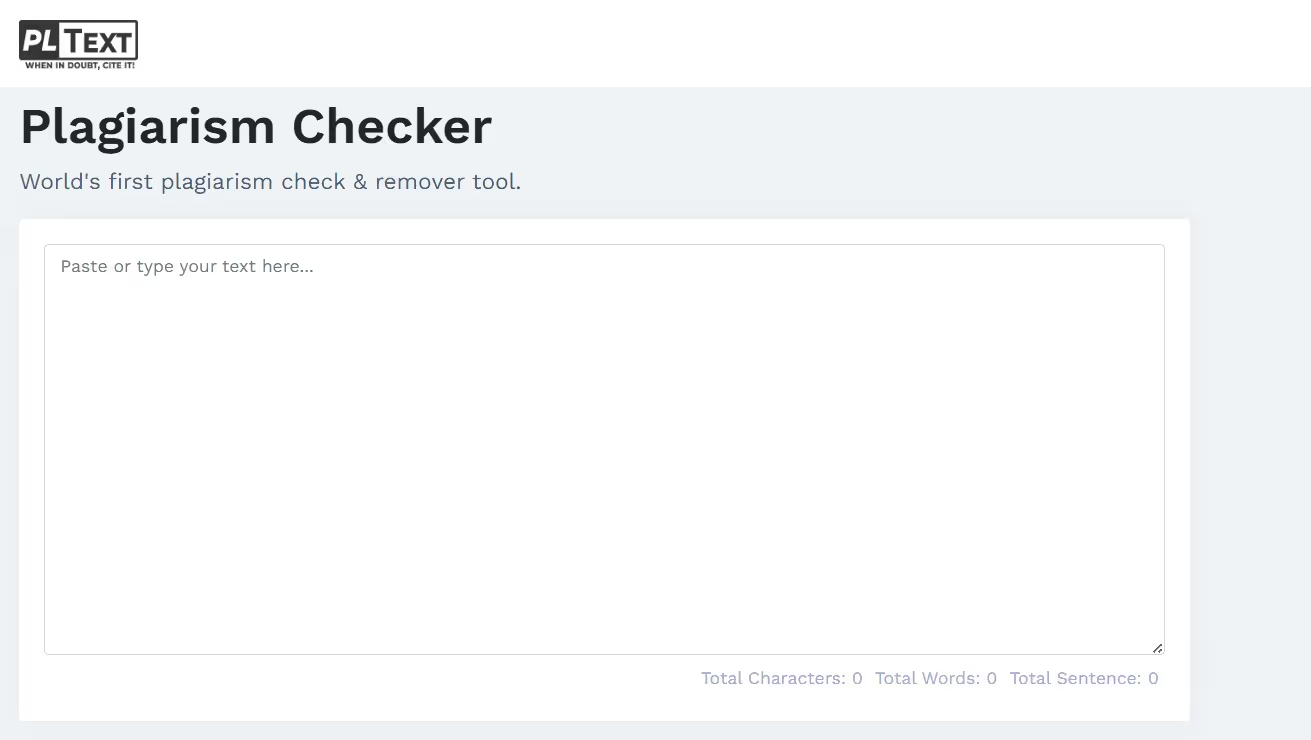
PLText describes itself as the “World's first plagiarism check & remover tool.” Through its website, it notes that it uses an AI deep check to find plagiarism in content.
To put its claims to the test, we tested PLText’s plagiarism checker against the Originality.ai Plagiarism Checker.
To fully test the PLText plagiarism checker, we compared it to two directly copied and pasted samples from blog posts published on the Originality.ai blog, as well as two instances of patchwork plagiarism.
The results of our review, including screenshots, are below.
PLText is an online plagiarism checking tool that claims to use a combination of AI deep search technology alongside crawling databases of “millions of web pages and academic resources.”
Specifically, it claims that it will identify plagiarism if 40% of the content that is input into the scanner is found to match other content accessible on the internet.
It also offers the option to remove plagiarism that it has found via an AI-based paraphrasing system.
PLText is aimed at students, teachers and webmasters.
The tool is designed to handle the direct copying and pasting of text into the plagiarism checker platform.
With PLText, the primary upload method for the plagiarism checker is copy and paste; there are no available options to upload other types of documents, such as .doc/.docx, .pdf or .rtf.
Users can check texts of up to 600 words for free with PLText.
However, once you exceed this limit, there is no clear warning or guidance on how to upgrade, nor does PLText display any pricing information on its website.
Users only receive the warning that texts must be 600 words or fewer in order to continue.
For this test, we focused on the PLText plagiarism checker.
We divided the test into two parts:
Step 1: First, we took content samples from articles published on the Originality.ai blog.
Step 2: Next, we added the content directly from the blog posts into the Originality.ai plagiarism checker and into the PLText plagiarism checker. We then checked the percentage of plagiarism detected by both platforms.
We chose two text examples directly from the Originality.ai blog:
Step 3: For the second part of the test, we chose examples of patchwork plagiarism.
Patchwork plagiarism is an example of plagiarism that pulls from several sources. Because it draws from different places, it can be more difficult for even advanced plagiarism checkers to detect.
Step 4: We then ran both samples through PLText and the Originality.ai Plagiarism Checker to compare results. Our results are shared below as screenshots and as a detailed chart showing the levels of plagiarism detected by each tool.
Originality.ai Plagiarism Checker: 100% Match
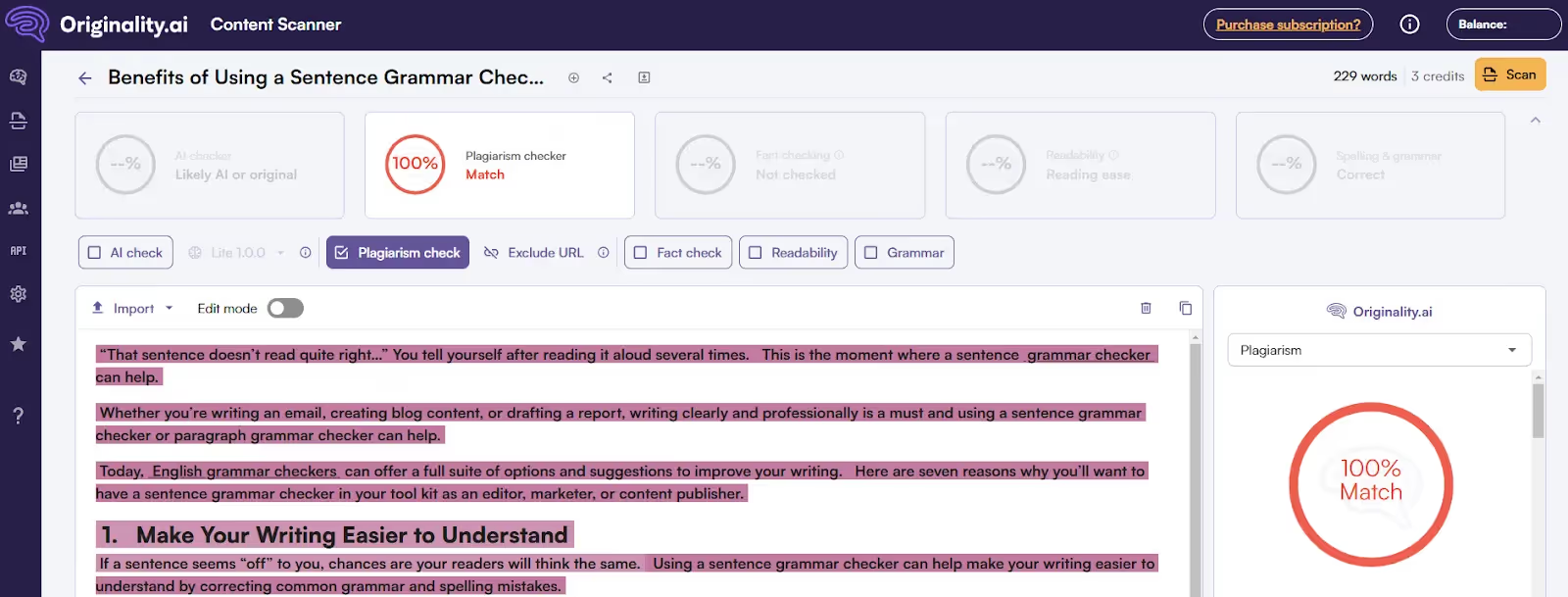
PLText Plagiarism Checker: 0% plagiarized
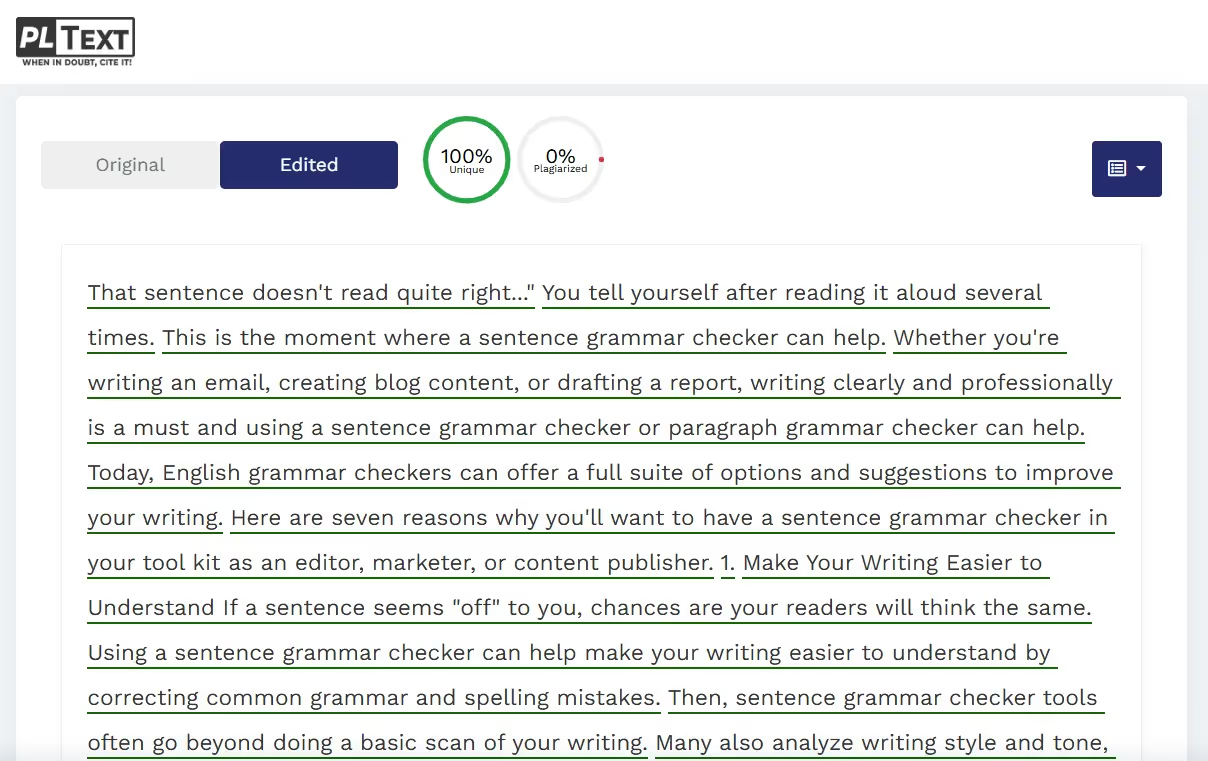
Originality.ai Plagiarism Checker 100% Match
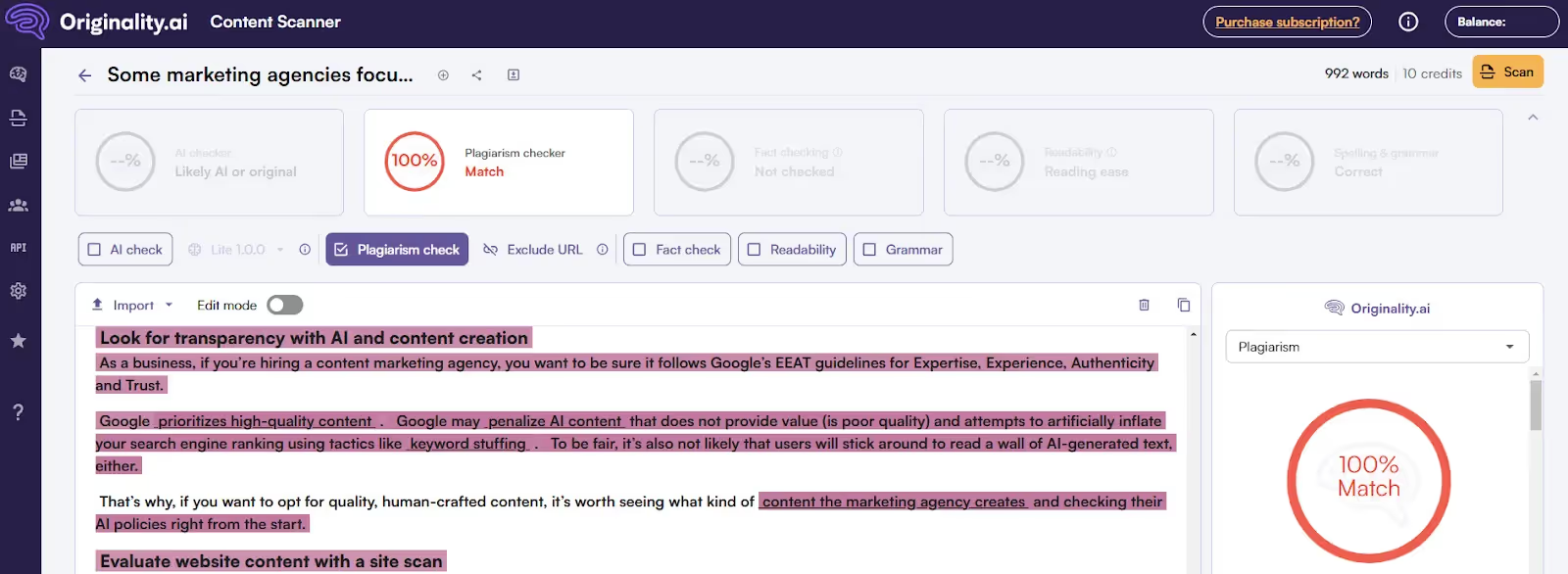
PLText Plagiarism Checker: 0% plagiarized

Originality.ai Plagiarism Checker: 77% Match

PLText Plagiarism Checker: 0% plagiarized
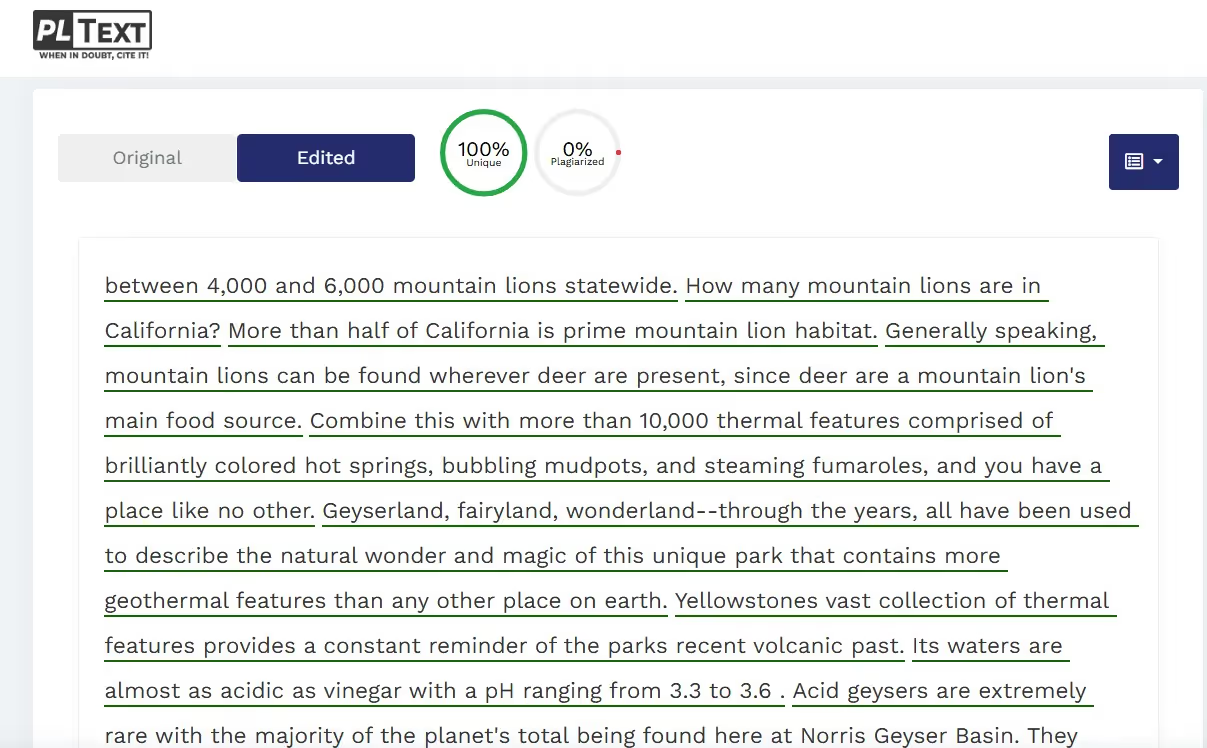
Originality.ai Plagiarism Checker: 62% Match
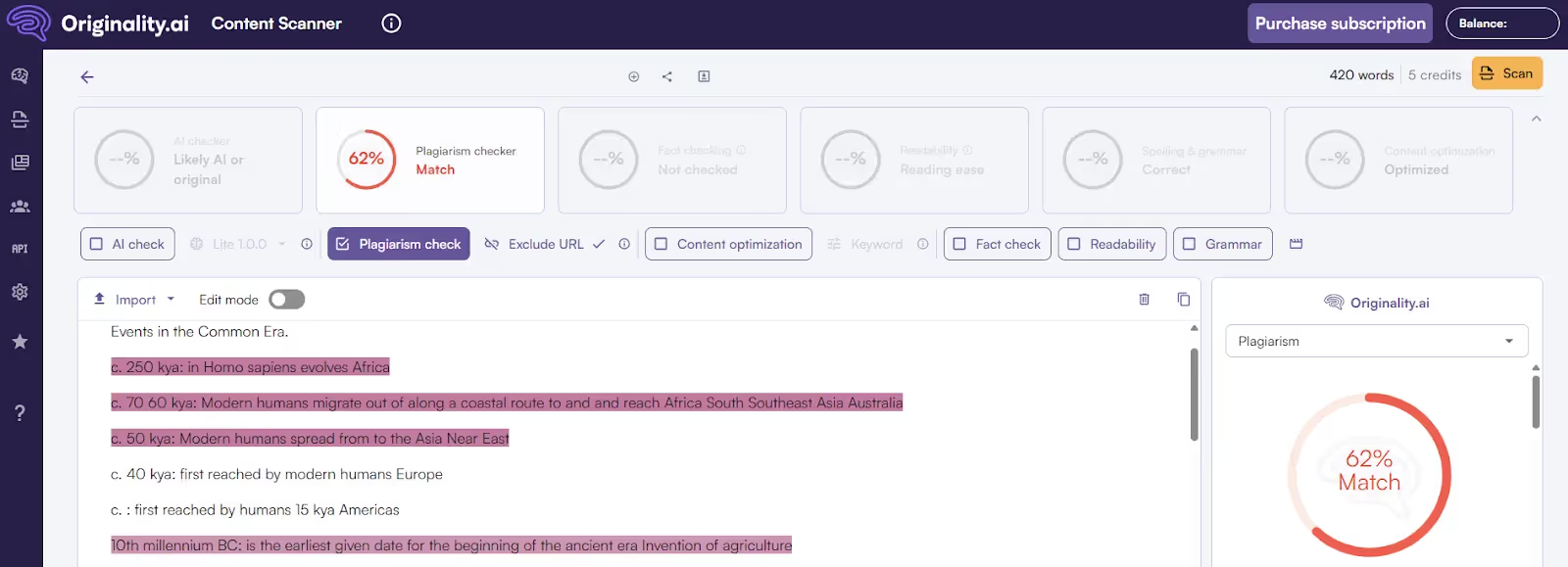
PLText Plagiarism Checker: 0% plagiarized
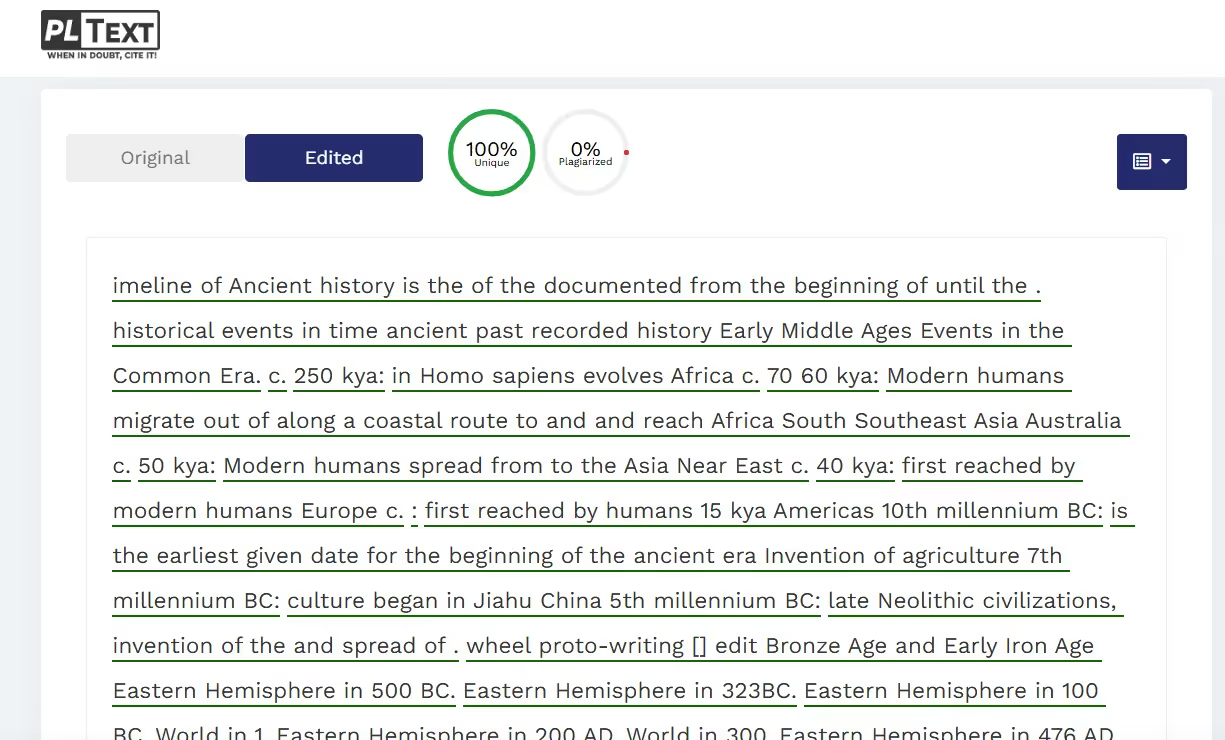
PLText was unable to detect plagiarism on any of the tested examples.
This resulted in even direct, copied-and-pasted text being labelled as 100% unique by the PLText plagiarism checking system.
Conversely, the Originality.ai Plagiarism Checker was able to detect verbatim (copy-paste) plagiarism with 100% confidence and even the more challenging patchwork plagiarism samples with a high level of precision.
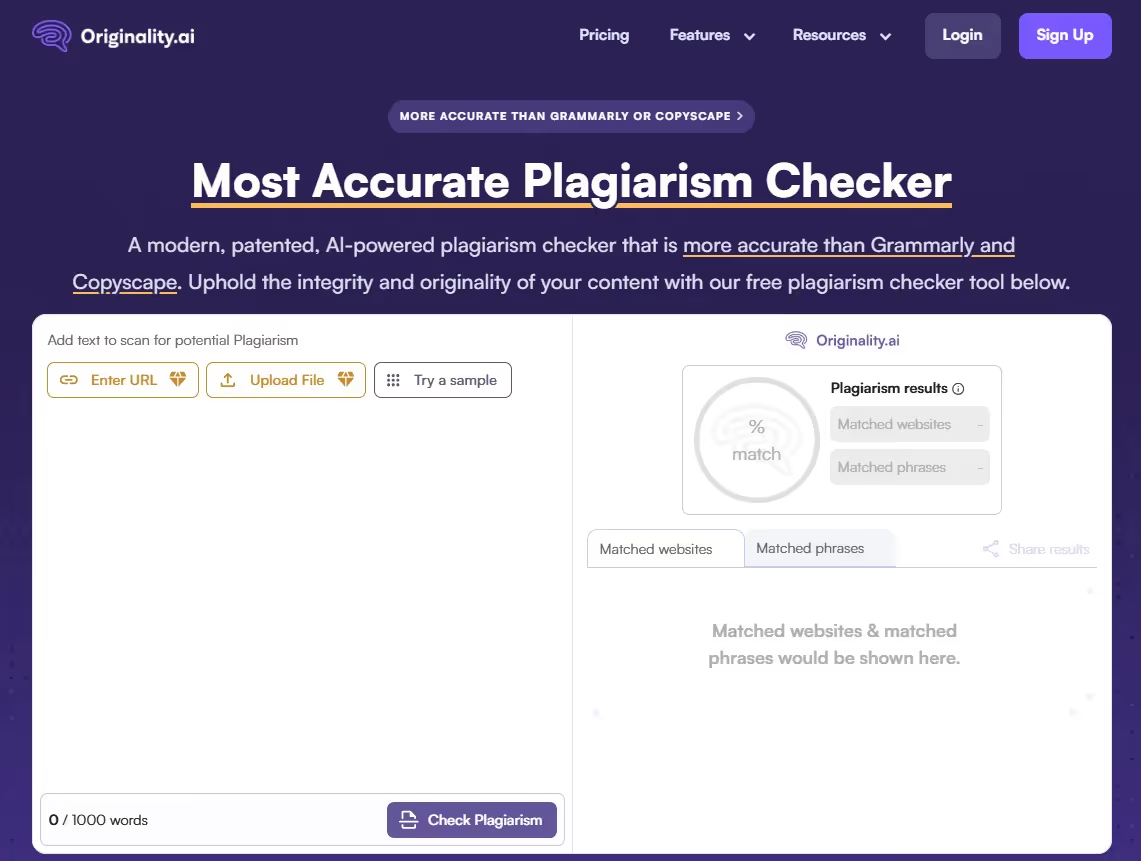
As you’ll note from the tests above, Originality.ai not only detected the direct copy-and-paste plagiarism examples but also uncovered instances of patchwork plagiarism with a high degree of accuracy.
However, Originality.ai is more than just a plagiarism detection tool.
It also encompasses a variety of patented tools for content professionals, including a best-in-class AI detector, a detailed Content Optimizer for search engine optimization, a fact-checker, and much more.
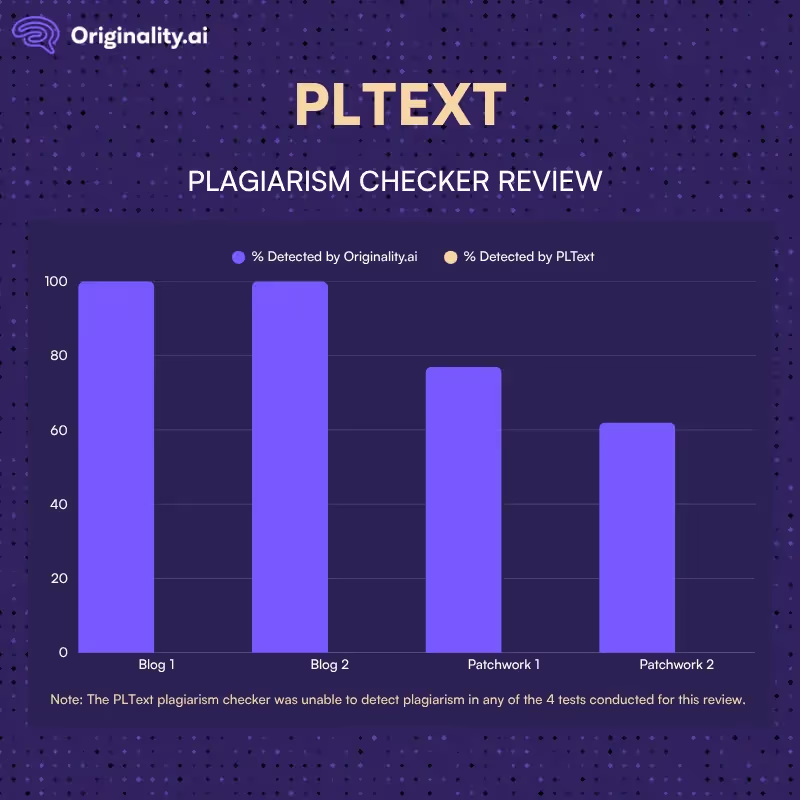
As you can see from the chart and screenshots above, PLText was unable to accurately detect plagiarism in any of the examples we tested.
For this reason, if you’re looking for the most accurate plagiarism checker that handles even complex forms of plagiarism like patchwork plagiarism, look no further than the Originality.ai Plagiarism Checker.
Read more plagiarism checker reviews:
PLText can check a variety of text types (up to 600 words) that are pasted into its platform, including papers and blogs.
However, considering that it didn’t identify any plagiarism in the four tests conducted for this review, we recommend running your own independent checks.
According to its website, PLText can check multiple languages. However, for the purposes of this test, we only tested its detection capabilities in English.
Looking for multilingual features? Learn more about our Multilingual AI Detector.
